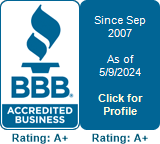
Managing your accounting practices is important as a business grows. As you hire employees and deal with larger and larger operations, you lose much direct control over day to day operations.
But rather than simply having to trust other people to act both ethically and financially prudent while protecting your interests, you can help ensure that. How? Here are 5 accounts payable best practices to institute in your business.
Separate Responsibility
If your accounting department is small, it may be hard to separate some functions and give them to multiple people. But it's important that no one person should have total control over any aspect of your accounting or bookkeeping work.
One great way to separate responsibilities and institute checks and balances is to hire a bookkeeping service to process at least some of your tasks. You can either have internal employees perform lower-level data entry and let the bookkeeper do higher-value ones or you may choose to have the bookkeeping service do some functions (such as entering invoices and generating follow-up contact) while you do others (like writing checks). Quality Bookkeeping Services in Wilmington is happy to help you create a great system of checks and balances within your company.
Use Invoice Numbers
One of the best ways to track what you owe to vendors is to be meticulous about using invoice numbers. This means entering all payments from the invoice itself rather than ever using a statement or other combined document. Why is this valuable? Using invoice numbers and not paying from bundled statements allows you to prevent duplicate payments. It also makes unintentional duplication of payment easier to notice.
Use statements as a tool for double-checking that your records match the vendor's records. Having a different employee compare statements for accuracy is an easy way to perform an internal audit or cross check for errors.
Track Incoming Invoices
In this modern age, tracking invoices is much easier than before. Creating a tracking system when invoices arrive makes it less likely that they will disappear when being sent for approval or delayed during processing. You can use whatever system you like, but an easy way is to scan invoices as they arrive and then keep them in a location that's emptied out as invoices are put in line for payment.
Obtain W-9 Forms
Verifying that all your vendors have appropriate legal status is important both to prevent liability for your business and to complete year-end reporting. The easiest way to do this is to have them complete Form W-9 before they can receive their first payment.
Even though it would be easier to simply write checks to vendors without this information, doing so in advance of payment gives you leverage and a deadline to ensure that this step is completed.
Practice Internal Auditing
No matter how large or small your company is, it's a good idea to practice a few basic internal auditing procedures. At best, it help identify weaknesses and strengths your team can use in the future. At worst, it identifies unintentional or intentional fraud.
A few simple internal audit techniques include selecting a few invoices at random to review, occasionally comparing vendor balances in the computer with paper files, and contacting some vendors to request their "amount due" information. You can decide how much auditing you want to do, but even a minimal amount will help you keep aware of what's going on in your company.
The earlier you institute these (and other) best practices in your accounts payable department, the easier it will be to implement them and the less disruption you'll have. By communicating well with your partners and employees, you can create a system that will keep everyone happy and ensure a more profitable future for your business.












